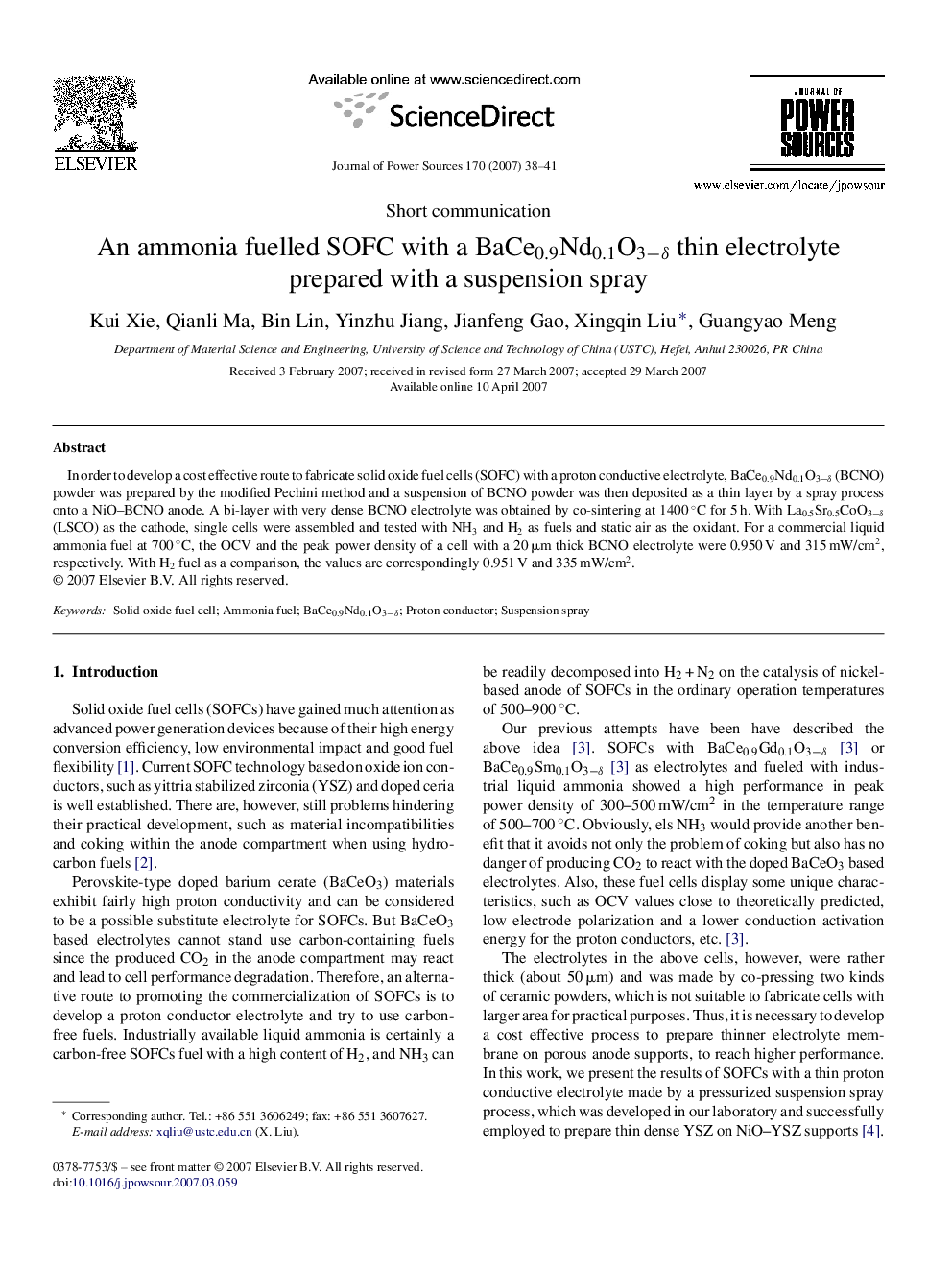| Article ID | Journal | Published Year | Pages | File Type |
|---|---|---|---|---|
| 1291368 | Journal of Power Sources | 2007 | 4 Pages |
In order to develop a cost effective route to fabricate solid oxide fuel cells (SOFC) with a proton conductive electrolyte, BaCe0.9Nd0.1O3−δ (BCNO) powder was prepared by the modified Pechini method and a suspension of BCNO powder was then deposited as a thin layer by a spray process onto a NiO–BCNO anode. A bi-layer with very dense BCNO electrolyte was obtained by co-sintering at 1400 °C for 5 h. With La0.5Sr0.5CoO3−δ (LSCO) as the cathode, single cells were assembled and tested with NH3 and H2 as fuels and static air as the oxidant. For a commercial liquid ammonia fuel at 700 °C, the OCV and the peak power density of a cell with a 20 μm thick BCNO electrolyte were 0.950 V and 315 mW/cm2, respectively. With H2 fuel as a comparison, the values are correspondingly 0.951 V and 335 mW/cm2.
